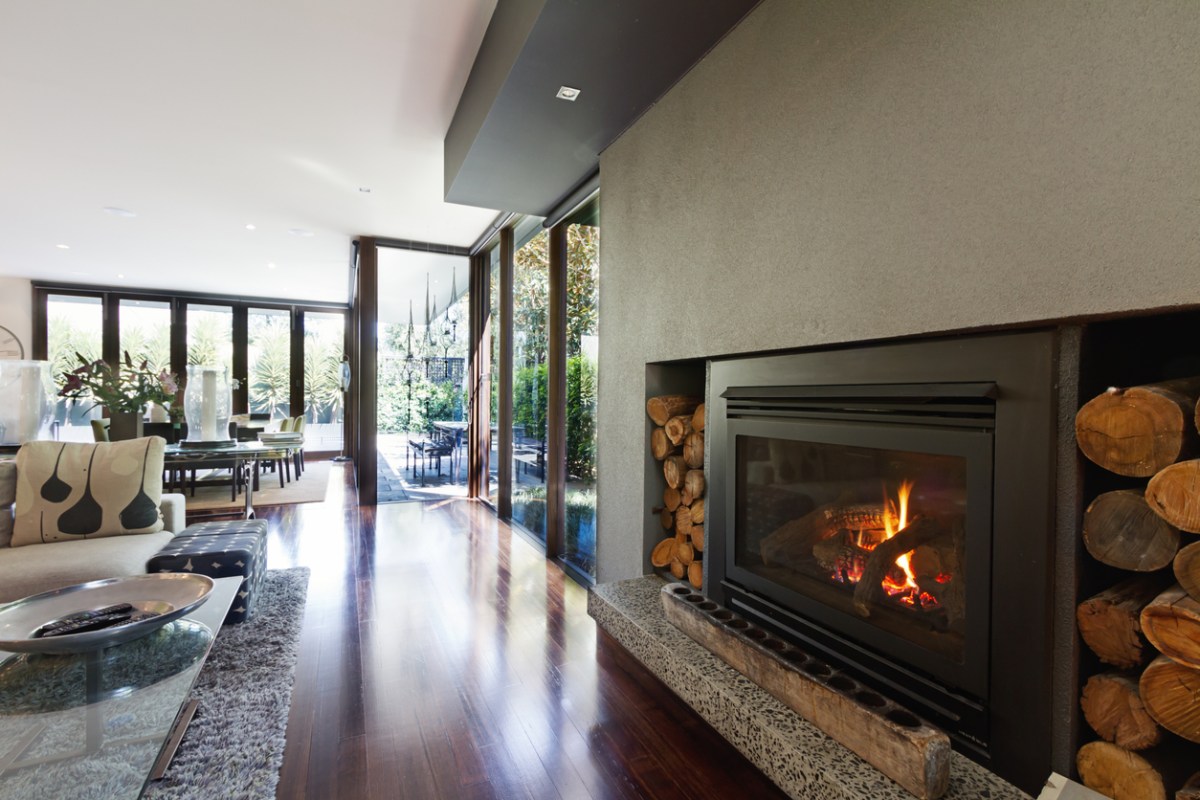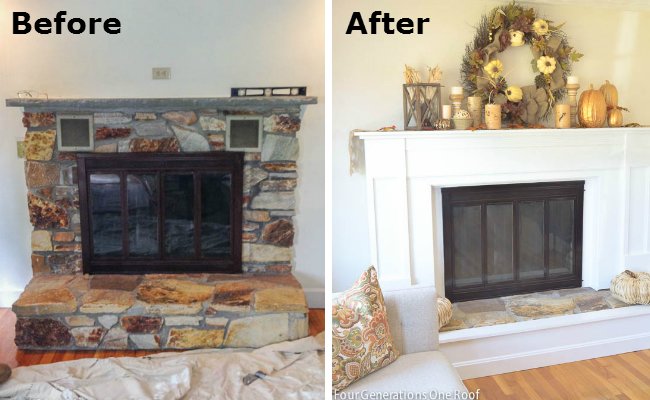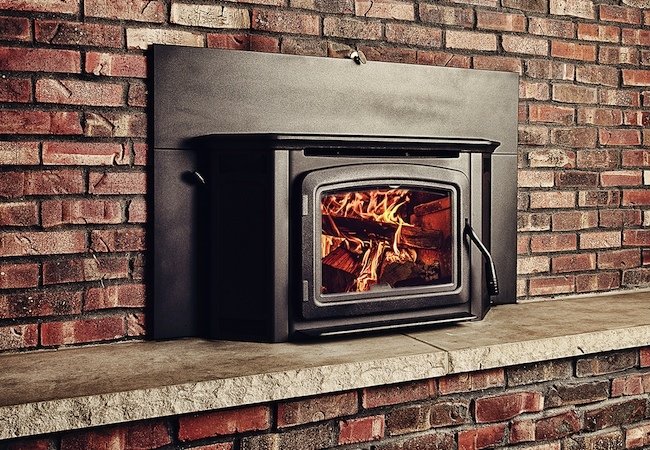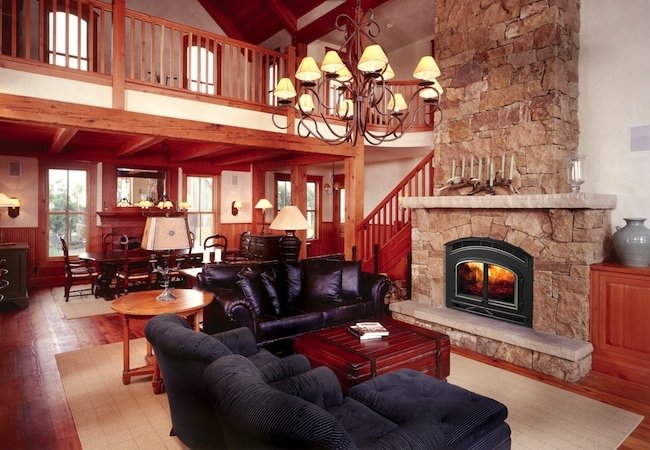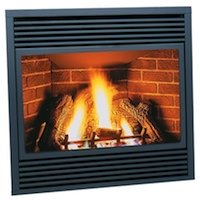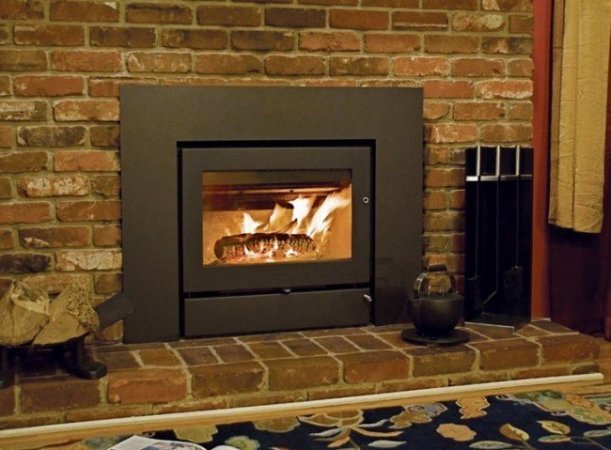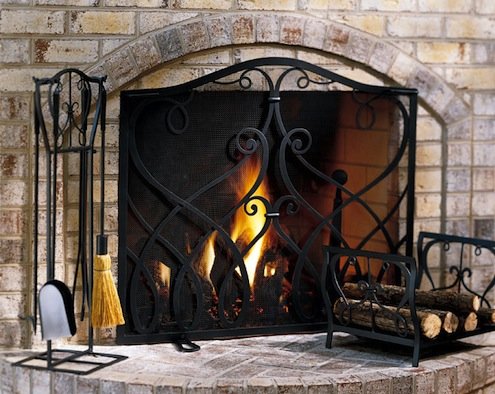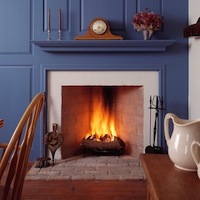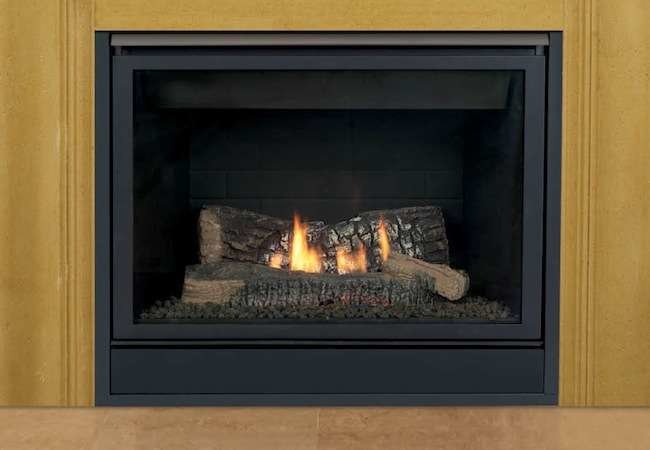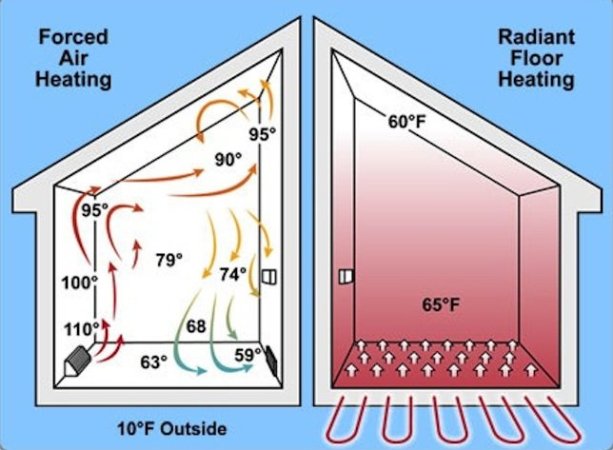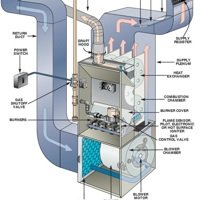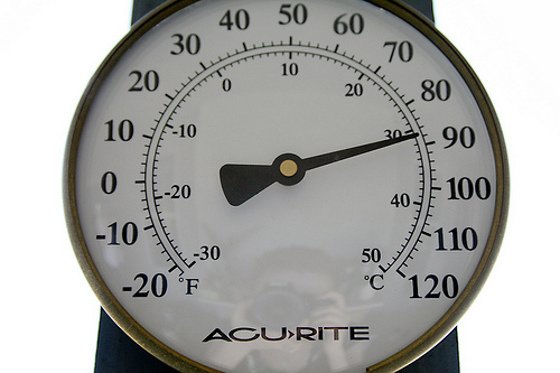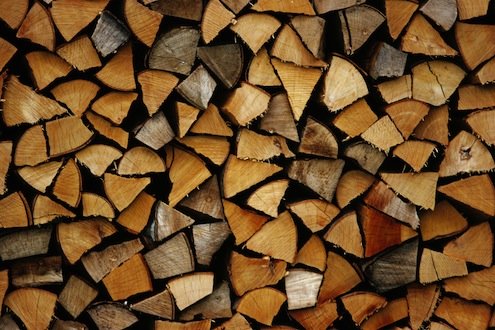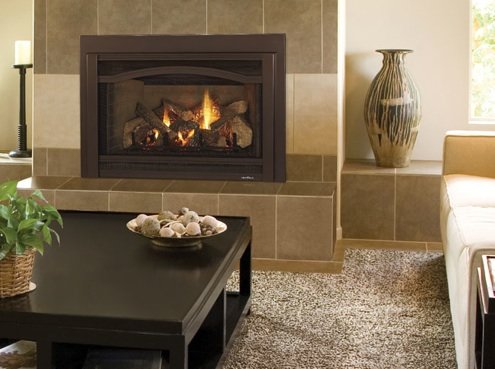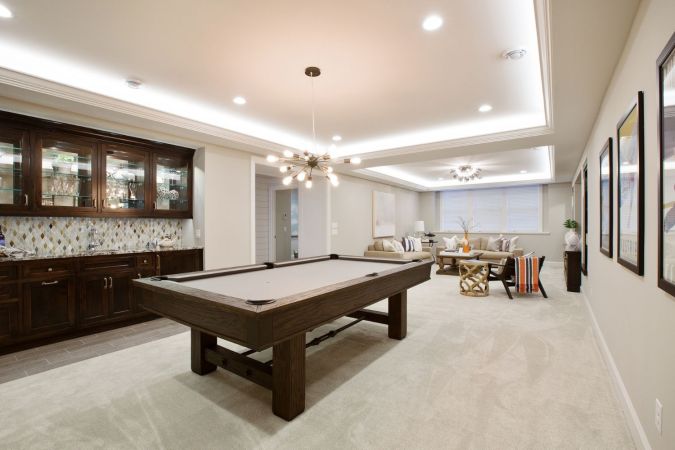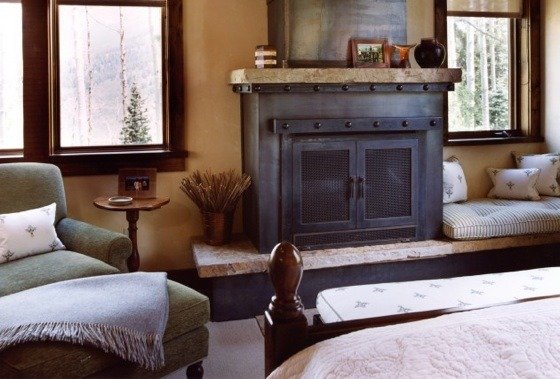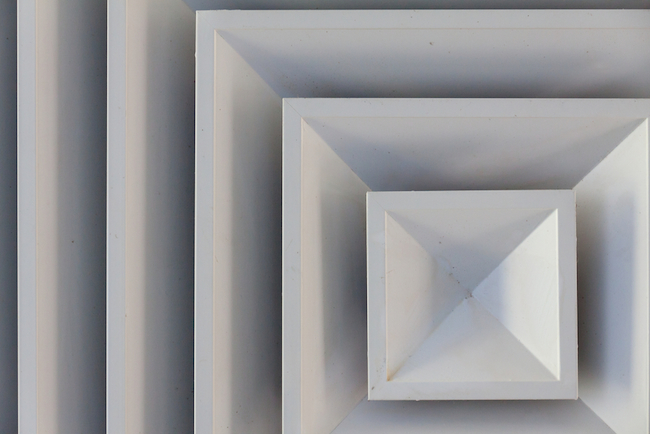We may earn revenue from the products available on this page and participate in affiliate programs. Learn More ›
Fireplaces have always been among the top amenities for homeowners looking to buy a new house. In fact, they rank just second behind outdoor patios, decks and porches, according to the National Association of Home Builders (NAHB). While the cost of adding a fireplace to an existing home used to be prohibitively expensive—requiring the creation of an exterior stone chimney, flue, firebox and, in many cases, floor supports to accommodate the weight of the hearth—today’s options are not only affordable, but a relatively easy home improvement.
Related: Gas Fireplaces: A Showcase of Design and Inspiration
What has made them so is the technology and installation flexibility of gas-fueled models. Since no actual combustion occurs in gas fireplaces, zero-clearance installation is possible, which, according to Monessen Hearth Systems, means that “these fireplaces can be installed in direct contact with combustible walls and floors. Their inner and outer shell construction allows for maximum heat insulation.” As long as you have a natural gas connection or propane availability, you can install a gas fireplace almost anywhere in your home—under a window, in either an outside or inside wall, at wainscot or floor level, in a corner or even in the center of a room. Shielded by tempered or ceramic glass, gas fireplaces can be exposed on three sides (a peninsula of glassed-in warmth) or four sides (a virtual see-through island).
Combine that flexibility, with a wide array of styles—from traditional to ultra-contemporary, a fire that looks and performs like real wood, and the benefit of improved energy efficiency, and it’s clear why gas fireplaces are one of the hottest hearth products on the market today, outselling wood and pellet varieties by more than half, according to the Hearth, Patio & Barbecue Association (HPBA), the trade association representing makers of heating and outdoor cooking equipment.
GAS VS. WOOD FIREPLACES
Comparing price lists from various manufacturers, you’ll find little significant difference between factory-made gas and wood units (from under $1,000 to nearly $3,000), and installation costs are about equal, no matter where you live. The main difference between gas and wood lies in venting and long-term performance.
Says Mike Ruppa, a veteran fireplace retailer and now president of Empire Distributing in upstate New York: “The nice thing about gas is that you have immediate ignition and complete control over the heat output of the appliance. With wood, a certain amount of time is required to light the fire, turn that energy into heat and then get that heat into a room.”
Ruppa points out that in contrast to a gas fireplace, whose warmth is thermostatically controlled, a wood-burning unit comes with only an air control—the damper. That, he says “allows you to control the amount of air going in, which consequently controls the combustion process and the heat output.”
As a bonus, high-end gas fireplaces are available with comfort control systems. “These are anticipators,” Ruppa explains. “They monitor the temperature of a room and start ramping the burner down as the room approaches a desired temperature.”
What about the environment? “Wood is a renewable resource, gas isn’t,” he points out. But, he adds, “in a gas appliance there are very few by-products of combustion entering the atmosphere. So, environmentally, I do think gas appliances are healthier for the environment than a polluting type wood-burning appliance.”
GAS FIREPLACE VENTILATION OPTIONS
There are three venting options available for gas fireplace installations:
- Natural vent, often called B vent, utilizes an existing masonry chimney or a factory-built metal chimney. Room air exhausts combustion by-products to the outside via a flexible liner or single pipe installed within the chimney.
- Direct-vent fireplaces draw in outdoor air for combustion, then expel spent air to the outside through a dual (co-linear) venting system, eliminating the heat loss associated with conventional chimneys, according to technicians at Majestic Fireplaces. They can be vented up through the roof or out to the side or back of a house; a perfect solution for homes without an existing chimney. Direct-vent units must, however, have a sealed glass door to maintain proper combustion and ensure efficiency and indoor air quality.
- Vent-free technology, once considered controversial, has now won wide acceptance. Robert Dischner, director of product development at Lennox Hearth Products states that “the fireplaces use catalytic-converter technology (similar to exhaust systems on new cars sold in the U.S.), which cleans hot air as it leaves the combustion chamber. Because of this technology, no chimney or venting is required.” Further, he says, “their sleek look is much like a plasma television.”
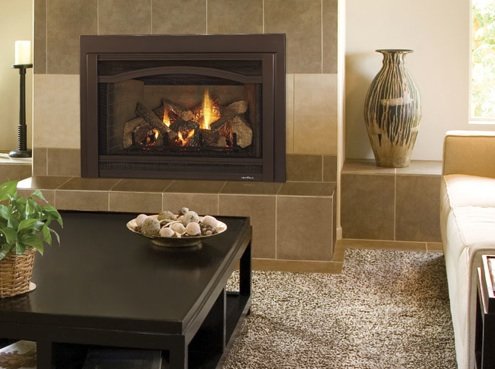
GAS FIREPLACE INSERTS
Perhaps the least efficient, most energy-wasteful way to heat a room is with an open fireplace, because so much warmth goes up the chimney. You can still utilize that chimney but improve the energy efficiency of your masonry fireplace by installing an insert, available in various sizes and shapes and generally priced from just under $500 to about $2,500.
According to Ruppa, “If you never even light this unit, you’re going to save money just by eliminating that cold-air expulsion through the fireplace chimney. By sealing off the fireplace at the damper area and installing a gas or even a wood insert with a chimney liner, you’ll be plugging up that hole and becoming more energy-efficient.”
HOW MUCH HEAT DOES A GAS FIREPLACE PUT OUT?
Depending on how well insulated your house is, Ruppa says a 40,000 BTU fireplace would be more than enough to heat a large living or family room. He also points out that “a lot of high-efficiency gas fireplaces have a large turn-down ratio—meaning, they can go from 40,000 BTU down to 12,000 BTU, enough to heat the average bedroom or dining room.” He adds that if you had a 40,000 BTU fireplace and only needed to use 50 percent of its capacity, you’d pay less than $1 an hour to operate.
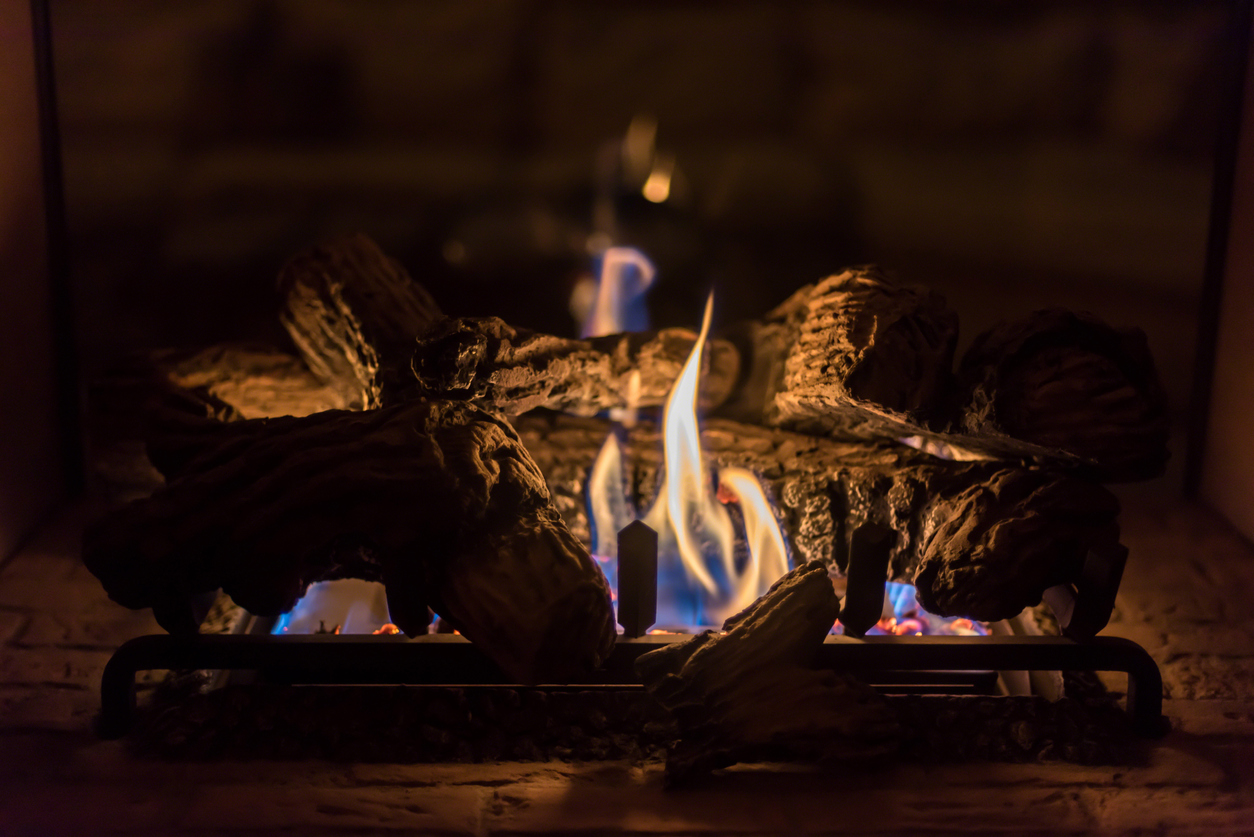
GETTING “THE LOG LOOK”
You no longer need to burn wood to achieve the warmth or pleasing glow of logs crackling in a hearth. Gas-fireplace manufacturers nationally market and sell ceramic or refractory cement log sets molded from real wood logs and produced in various sizes. Prices, based on size and quality, range from about $400 to $1,000. Realism is further boosted not only by an authentic-looking flame but also by a coal bed of sand and bits of lava rock and rock wool that add to the fireplace glow. Another touch of available realism: the aroma of burning wood.
CLEANING YOUR GAS FIREPLACE
Routine maintenance plus proper installation and use is essential to fireplace safety as well as the ability to burn clean and green. To ensure top performance, a gas fireplace needs servicing once a year by a pro who inspects the burner, fan, venting, pilot light and thermostat, and even cleans the glass.
To locate a certified installer in your area, contact the National Fireplace Institute. In addition, the HPBA recommends that all vents for vented gas fireplaces be inspected on an annual basis by a chimney sweep certified by the Chimney Safety Institute of America and also recommends the installation of a carbon monoxide detector with all hearth products.
